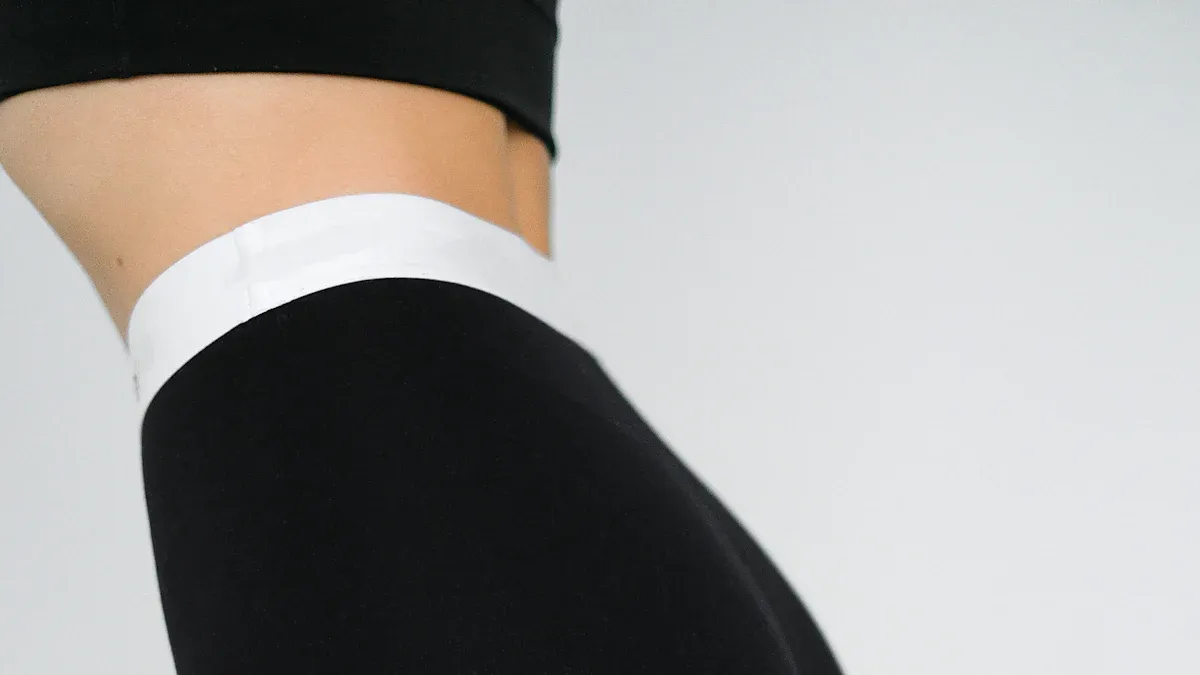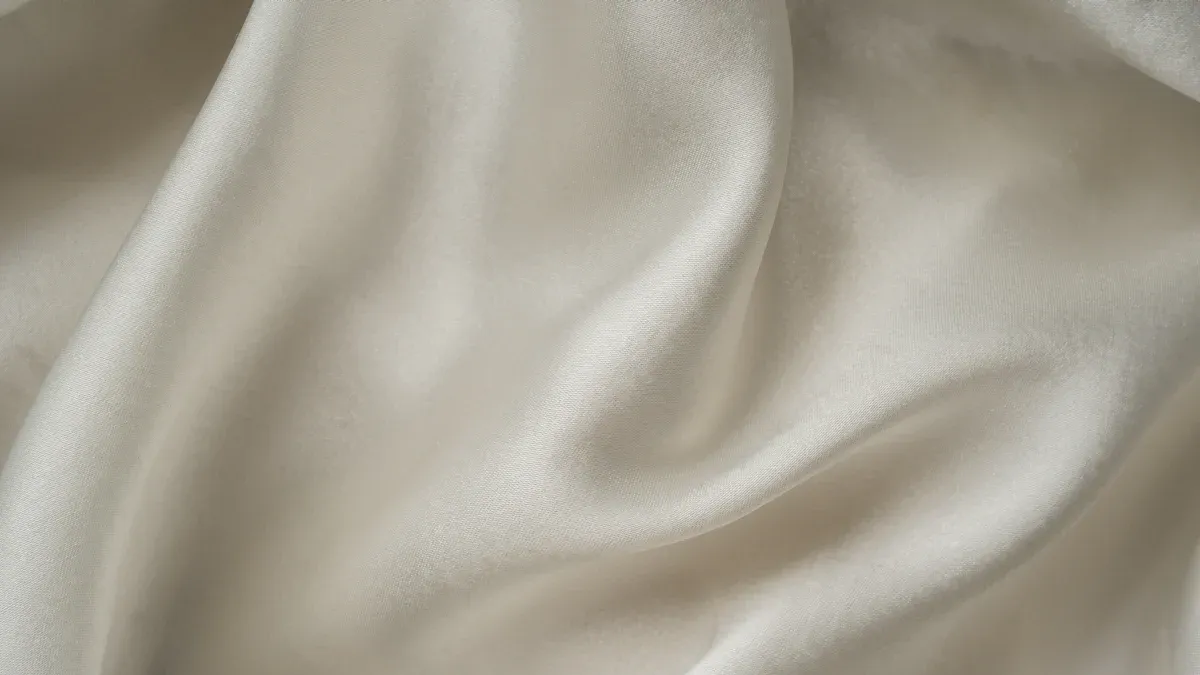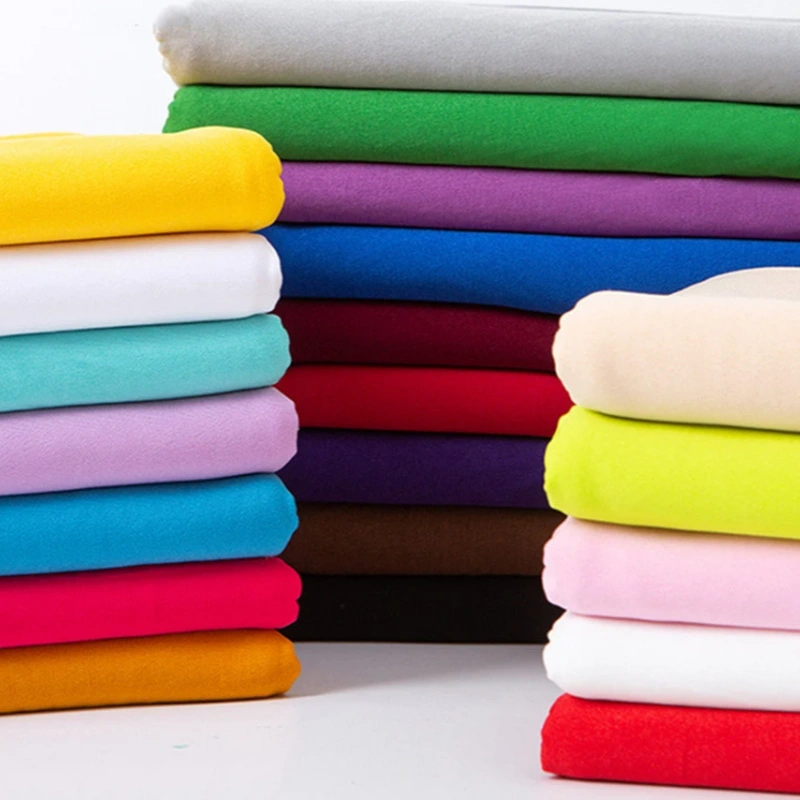
If you have sensitive skin, you know how important it is to pick the right fabric for your clothing. When you look at milk silk fabric vs spandex, milk silk fabric usually comes out on top for comfort.
This natural fabric is made from milk protein, so it’s hypoallergenic, soft, and breathable. You’ll often find it in baby clothing and even medical textiles because it helps keep skin dry and fresh. Friendtex focuses on high-quality, skin-friendly clothing, so you can feel confident about what touches your skin.
Key Takeaways
Milk silk fabric feels soft, breathable, and gentle, making it ideal for sensitive skin.
Spandex offers great stretch and durability, but may irritate some people.
Natural fabrics like milk silk reduce allergy risks and keep skin cool and dry.
Check fabric labels and choose hypoallergenic options to protect sensitive skin.
Friendtex provides high-quality milk silk and silk clothing designed for comfort and skin health.
Quick Comparisons
Key Features
When you compare milk silk fabric vs spandex, you’ll notice some big differences in how each fabric feels and performs. Here’s a quick table to help you see the main points side by side:
Aspect | Milk Silk Fabric | Spandex |
|---|---|---|
Composition | ~80% milk protein fibers (casein) + ~20% auxiliary fibers (spandex or polyester) | Synthetic polyurethane fiber (elastic fiber) |
Texture | Silky, smooth, soft, breathable, cool to the touch | Highly elastic, valued for stretch rather than softness |
Skin Compatibility | Hypoallergenic, rich in amino acids beneficial to skin, natural antibacterial properties, skin-friendly pH | No natural softness or skin benefits, synthetic, mainly used for elasticity and shape retention |
Environmental | Biodegradable, eco-friendly | Synthetic, not biodegradable |
If you want a fabric that feels soft and cool, milk silk fabric stands out. It’s gentle on your skin and even has natural moisturizing and antibacterial properties. Spandex, on the other hand, is all about being stretchy.
You’ll find it in lots of activewear and sports gear because it helps clothes move with you and keeps their shape. While spandex is great for flexibility, it doesn’t offer the same softness or skin benefits as milk silk.
Skin Sensitivity
If you have sensitive skin, you probably know how important it is to choose the right fabric. Milk silk fabric is hypoallergenic, so it rarely irritates. Its natural protein structure and amino acids help nourish your skin and keep it comfortable. You’ll also notice less friction, which means less chance of redness or itching.
Spandex is a common choice for stretchy fabric in activewear, but it can sometimes cause problems for sensitive skin. Some people experience irritation or even allergic reactions, especially if they have eczema or contact dermatitis.
Synthetic fibers like spandex don’t let your skin breathe as well, and they can trap moisture, leading to discomfort. If you want to avoid irritation, natural fibers like milk silk are usually a safer bet.
Tip: If you have sensitive skin, always check the fabric content before buying new clothes. Look for natural, hypoallergenic options to keep your skin happy.
Milk Silk Fabric Overview

What Is Milk Silk Fabric?
You might wonder what makes milk silk fabric so special. This fabric comes from milk fiber, which is made by extracting casein protein from milk. Manufacturers spin these proteins into soft, smooth threads. The result is a fabric that feels luxurious and gentle on your skin. You get a lightweight, breathable material that keeps you comfortable all day.
Milk silk fabric stands out because it keeps natural milk proteins and amino acids. These elements help nourish and hydrate your skin. The fabric is free from harsh chemicals, dyes, or glues, which means you’re less likely to have an allergic reaction. Plus, milk silk fabric has natural antimicrobial properties, so it helps keep your skin healthy.
Milk silk fabric is made from casein protein fibers.
It contains amino acids that support skin health.
The fabric is hypoallergenic and gentle.
It resists bacteria and keeps your skin fresh.
You get a breathable and thermo-regulating experience.
The fabric is sustainable and biodegradable.
Benefits of Milk Silk Fabric
If you have sensitive skin, you’ll love the benefits of milk silk fabric. The smooth texture feels almost like cashmere or real silk, giving you a luxurious feel every time you wear it.
Clinical studies show that silk fabrics, including milk silk, can help people with eczema and other skin issues. The fabric reduces irritation, helps your skin retain moisture, and even acts as a barrier against bacteria. You stay comfortable, and your skin stays calm.
Benefit Category | Description |
|---|---|
Eco-Friendly Nature | Milk silk fabric is biodegradable and natural, reducing environmental impact compared to synthetics. |
Softness and Comfort | Offers a luxurious, smooth feel similar to silk or cashmere, gentle on sensitive skin. |
Breathability and Moisture Absorption | Allows air circulation and wicks moisture away, helping to keep skin dry and comfortable. |
Antibacterial and Hypoallergenic | Contains antibacterial properties and is hypoallergenic, reducing skin irritation and odors. |
UV Resistance | Naturally resists UV rays, providing additional skin protection. |
Friendtex and Milk Silk Options
When you choose Friendtex, you get more than just a fabric—you get peace of mind. Friendtex uses only high-quality milk silk fabric in its products. The company focuses on sustainable characteristics and eco-friendly practices, so you know your clothing is good for you and the planet.
Friendtex’s commitment to sustainable and luxurious materials means you enjoy a soft, lightweight, and skin-friendly experience every time. If you want clothing that feels luxurious and supports your sensitive skin, Friendtex’s milk silk fabric options are a smart choice.
Spandex Fabric Overview
What Is Spandex?
You probably know spandex as the go-to fabric for anything that needs a lot of stretch. Manufacturers create spandex by combining chemicals like macro glycol and diisocyanate monomer under heat and pressure. This process forms a prepolymer, which then gets spun into fibers.
Most spandex comes from a dry spinning method, which gives it that signature high stretch and lightweight feel. You’ll find spandex in everything from leggings to swimwear because it holds its shape and moves with you.
Sometimes, brands blend spandex with cotton or polyester to make the fabric even more comfortable and add moisture-wicking properties. When you see a label that mentions STANDARD 100 by OEKO-TEX®, you know the spandex fabric is free from harmful substances and safer for sensitive skin.
Stretchy Fabric Properties
Spandex stands out as a stretchy fabric. You get exceptional flexibility, which makes it perfect for activewear and clothes that need to fit snugly. Here’s a quick look at what makes spandex unique:
Property | Impact on Comfort and Skin Sensitivity |
|---|---|
High Elasticity | Gives you freedom of movement and flexibility in tight garments |
Soft and Lightweight | Feels gentle and non-bulky against your skin |
Shape Retention | Keeps your clothes fitting well, so they don’t sag |
Moisture-Wicking | Pulls sweat away from your skin, helping you stay dry |
Quick-Drying | Dries faster than natural fibers, keeping you comfortable |
Low Breathability | It can trap heat and moisture, which may cause irritation |
Heat Sensitivity | Loses quality with too much heat, affecting comfort |
Potential Allergies | Some people may notice irritation or allergic reactions |
You’ll love how spandex lets you move freely. The fabric’s high stretch means your clothes bounce back to their original shape, even after lots of wear.
Many brands use spandex in activewear because it supports your body and keeps you comfortable during workouts. The moisture-wicking fabric helps pull sweat away, so you feel dry and fresh.
Note: Spandex is sensitive to heat. Always wash it in cool water and avoid high dryer settings to keep your clothes in top shape.
Skin Reactions
Most people can wear spandex without any problems. The fabric is generally hypoallergenic, but some of you might notice irritation. This can happen if your skin reacts to chemicals left over from the manufacturing process.
If you have sensitive skin, look for spandex fabrics with certifications like STANDARD 100 by OEKO-TEX®. These fabrics go through extra testing to make sure they don’t contain harmful substances.
Blending spandex with natural fibers like cotton can also make the fabric softer and more breathable, which helps reduce the risk of irritation. If you ever feel itchy or notice redness after wearing spandex, try switching to a blend or a different fabric that’s more skin-friendly.
Milk Silk Fabric vs Spandex
Softness and Comfort
When you slip on a shirt or pajamas, you want the fabric to feel soft and comfortable against your skin. That’s where the difference between milk silk fabric vs spandex really stands out. Milk silk fabric feels incredibly soft, almost like a second skin.
You’ll notice the smoothness right away, and it doesn’t cling or scratch. This fabric is gentle, making it a favorite for people with sensitive skin. You can wear it all day and still feel comfortable.
Spandex, on the other hand, is all about stretch. You’ll find it in lots of activewear because it moves with you. While spandex can feel smooth, it doesn’t have the same soft touch as milk silk fabric. Sometimes, spandex can feel a bit tight or even sticky, especially if you sweat.
If you want a fabric that feels soft and cozy, milk silk fabric is the better choice for everyday comfort.
If you love pajamas that feel gentle and luxurious, milk silk fabric will make your nights much more comfortable.
Breathability
Breathability is a big deal, especially if you have sensitive skin or live in a warm climate. Milk silk fabric is naturally breathable. Air flows through it easily, so you stay cool and dry. This fabric also helps wick away moisture, which keeps your skin feeling fresh. You won’t get that sticky feeling, even on hot days.
Spandex is different. It’s a moisture-wicking fabric, so it does pull sweat away from your skin. But spandex isn’t as breathable as milk silk fabric. Sometimes, it can trap heat and moisture, which might make you feel uncomfortable during long wear. That’s why you often see spandex blended with other fibers in activewear—to help balance out the breathability.
If you want softness and breathability in your clothes, milk silk fabric is a great pick. You’ll feel cool and comfortable, whether you’re relaxing at home or out and about.
Allergen Risk
If you have sensitive skin, you probably worry about allergic reactions. Milk silk fabric is hypoallergenic. It rarely irritates, and it even has natural proteins that can help soothe your skin. You won’t find harsh chemicals or rough fibers in this fabric. That means less itching, less redness, and more peace of mind.
Spandex is a synthetic fiber. Most people can wear it without problems, but some people do react to it. Sometimes, the chemicals used in making spandex can irritate. If you have allergies or eczema, you might notice itching or rashes after wearing spandex for a long time. Choosing milk silk fabric can help you avoid these issues and keep your skin happy.
Tip: Always check the label if you have allergies. Natural, hypoallergenic fabrics like milk silk fabric are usually safer for sensitive skin.
Durability
You want your clothes to last, especially if you wear them often. When you look at milk silk fabric vs spandex, durability is something to consider. Spandex stands out for its strength. Tests show that spandex fabric can handle hundreds of washes and lots of stretching without losing its shape.
Even after 10,000 cycles of abrasion, spandex keeps its stretch and repels water. Some spandex fabrics even recover after damage if you apply a little heat. That’s why you see spandex in so much activewear—it’s built to last through tough workouts and repeated washing.
Milk silk fabric feels soft and luxurious, but there isn’t as much data about how it holds up after years of wear and washing. Most people find that it stays comfortable and keeps its shape with gentle care.
If you want a sustainable option that feels good and lasts, milk silk fabric is a solid choice for everyday wear. For high-stretch, moisture-wicking, and long-lasting performance, spandex is hard to beat, especially in activewear.
If you want pajamas or loungewear that feel soft and last, treat milk silk fabric gently. For sports or high-movement clothes, spandex gives you the durability you need.
Pros and Cons
Milk Silk Fabric
If you want a fabric that feels gentle and luxurious, milk silk fabric stands out. You get a smooth, soft touch that works well for sensitive skin. Here are some pros and cons to help you decide:
Feels comfortable and smooth, almost like real silk.
Contains natural protein fibers and amino acids that help reduce irritation.
Breathable and absorbs moisture, so you stay cool and dry at night.
Offers good elasticity and resists wrinkles, which means your clothes look fresh longer.
Biodegradable and sustainable, making it a smart choice for the environment.
No reported negative effects for sensitive skin.
You might notice that milk silk fabric costs more than some other options. The production process is also more complex, but you get a premium feel and extra comfort in return.
Spandex
Spandex is everywhere in activewear and stretchy clothes. You probably love how it moves with you and keeps its shape. Still, it’s important to know both sides before you choose this fabric:
Super stretchy, so your clothes fit snugly and let you move freely.
Lightweight and quick-drying, which is great for workouts.
Keeps its shape even after lots of washing and wearing.
Often blended with other fibers to boost comfort.
However, spandex is a synthetic material. Some people with sensitive skin may notice irritation, especially if they wear it for long periods. It doesn’t breathe as well as natural fibers, so it can trap heat and moisture. Spandex is not biodegradable, so it’s less sustainable than milk silk fabric.
If you have sensitive skin, you might want to limit how much spandex you wear, especially in tight-fitting clothes.
Choosing Fabric for Sensitive Skin

Tips for Selection
If you have sensitive skin, picking the right clothing can make a big difference in your comfort. You want to avoid fabrics that trap heat or irritate your skin. Start by looking for natural fibers.
Organic cotton, bamboo, silk, linen, hemp, and eucalyptus all offer hypoallergenic, breathable, and moisture-wicking properties. These materials help keep your skin dry and cool, which is important if you deal with irritation or allergies.
Check for certifications like GOTS, OEKO-TEX, or BCI. These labels show that the clothing is free from harsh chemicals and processed gently. Try to avoid synthetic fabrics such as polyester, nylon, acrylic, and spandex.
These can trap moisture and heat, which may lead to itching or redness. If you are unsure about a new fabric, do a patch test by taping a small piece to your skin for a few hours. This simple step helps you spot any reactions before you buy more.
Silk, especially mulberry silk, stands out as a top choice for sensitive skin. It has a natural protein coating that resists bacteria and allergens. Silk feels smooth and reduces friction, so it rarely irritates.
Studies show that silk proteins can even help your skin heal and regenerate. You also want to wash your clothing with fragrance-free detergents to keep it gentle on your skin.
Tip: If you have chronic sensitivities, talk to a dermatologist or allergist for personalized advice.
Friendtex Silk Nightgowns for Women
If you want a truly luxurious feel against your skin, Friendtex Silk Nightgowns for Women are a wonderful choice. These nightgowns use high-quality silk, which is naturally hypoallergenic and gentle.
You get a smooth, breathable fabric that keeps your skin comfortable all night. Silk helps regulate your body temperature, so you stay cool in summer and warm in winter.
Friendtex designs its clothing with sensitive skin in mind. You can choose from different lengths, sleeve styles, and colors to match your style. The silk fabric resists dust mites and allergens, making it perfect if you have allergies.
Each nightgown offers a luxurious experience, turning your bedtime routine into something special. With Friendtex, you enjoy both comfort and elegance in every piece of clothing.
If you want to invest in clothing that cares for your skin and feels amazing, Friendtex Silk Nightgowns for Women deliver both quality and a luxurious touch.
Conclusion
When you want the best for sensitive skin, milk silk fabric stands out for its softness, breathability, and gentle touch. Experts suggest you pick clothing made from natural, hypoallergenic fibers like silk and avoid rough or synthetic options.
Look for loose-fitting clothing that lets your skin breathe and keeps you cool at night. Friendtex offers sleepwear designed with your comfort in mind, so you can enjoy clothing that feels as good as it looks.
FAQ
Is milk silk fabric safe for people with allergies?
Yes, you can wear milk silk fabric if you have allergies. It’s hypoallergenic and gentle on your skin. You’ll notice less irritation compared to many synthetic fabrics.
Can spandex cause skin irritation?
Some people experience itching or redness from spandex, especially if they have sensitive skin. If you notice discomfort, try switching to natural fabrics like milk silk or silk.
How do I care for milk silk or silk nightgowns?
Hand-wash your nightgown in cold water with a gentle detergent. Lay it flat to dry. This keeps the fabric soft and helps it last longer.
What makes Friendtex silk nightgowns good for sensitive skin?
Friendtex uses high-quality silk that feels smooth and breathable. You get a hypoallergenic fabric that helps regulate temperature and keeps your skin comfortable all night.


